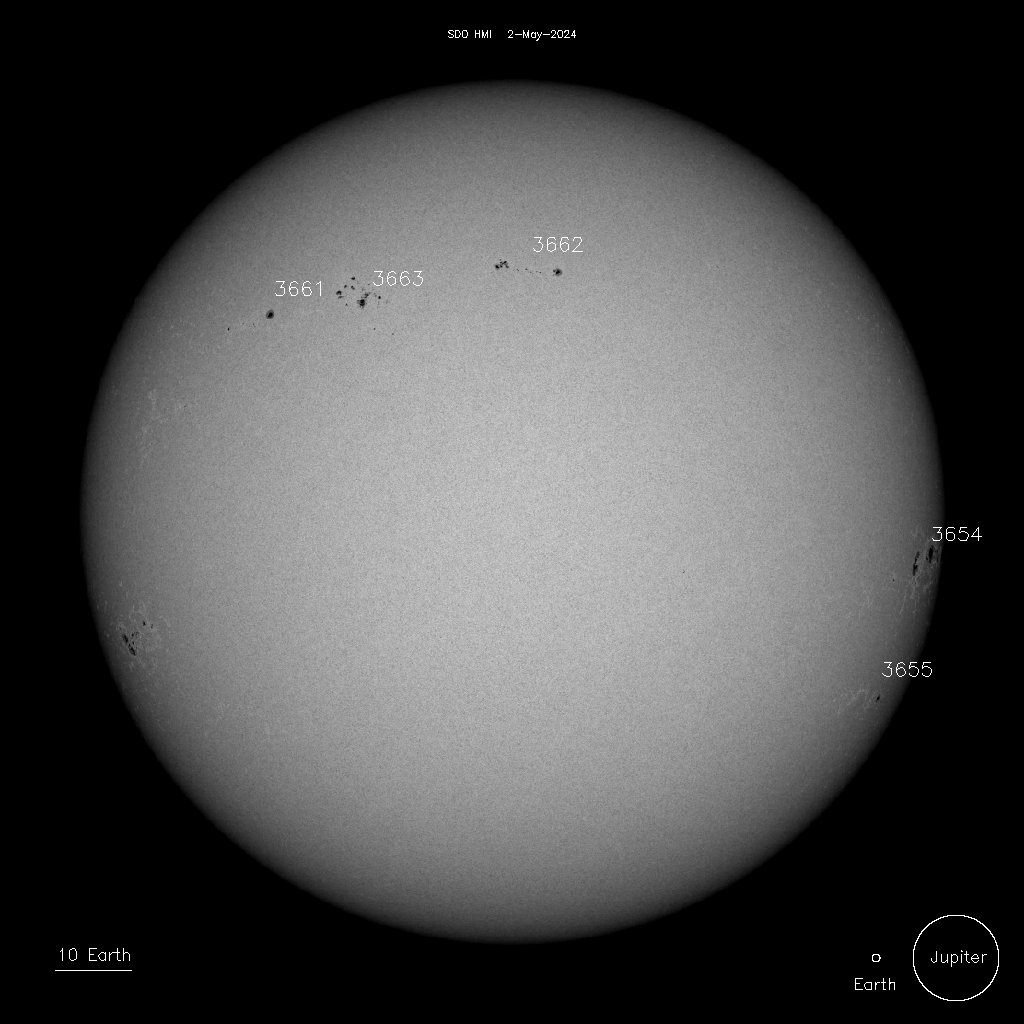The above image was taken July 16th by the Helioseismic and Magnetic Imager (HMI) aboard the Solar Dynamics Observatory (SDO). HMI captures images at 6173 Angtroms with a resolution of 1 arcsecond. Image Credit: SDO/HMI/GSFC/NASA
After several postings of the sun in the X-ray, Hydrogen-Alpha, and various other bands of the electromagnetic spectrum, we thought it might be nice to see the sun in something close to a heavily filtered perspective. So we chose this image taken July 16th by the Helioseismic and Magnetic Imager (HMI) aboard the Solar Dynamics Observatory (SDO). Granted that you don't get as much visual information as those other bands might provide, you do get a good view of the sunspots. Or should we say, the human-eye visible manifestations of the active regions of the sun? Oh, well. Look at the pretty sunspots...
NOAA's Space Weather Prediction Center reports that solar activity continues to be low, but there continues to be a chance for an isolated M-class solar flare activity. Active Region AR 1520 is the most likely source. A decline in activity by July 19th as regions AR 1519, 1520, and 1521 cross the western limb and disappear from sight.
Earth's geomagnetic activity is expected to be unsettled with a chance for activity on July 17th. In addition, there is a chance for isolated minor to major storm periods at high latitudes during the earlier part of the 17th. Solar wind driving of the magnetosphere is expected to continue to decrease in intensity throughout the day and predominantly quiet levels are expected for July 18th and 19th.
To monitor solar flare activity minute by minute, visit the "Today's Space Weather" page of NOAA's Space Weather Prediction Center, URL: http://www.swpc.noaa.gov/ .
To learn more about the sun and to stay current on solar activity, visit the mission home page of the Solar Dynamics Observatory (SDO), sdo.gsfc.nasa.gov .
To catch postings for all my blogs, subscribe on Twitter to twitter.com/RoamingAstro . Email feedback to: RoamingAstroInput@gmail.com .
-

No comments:
Post a Comment